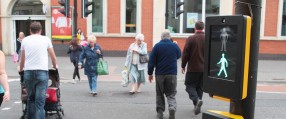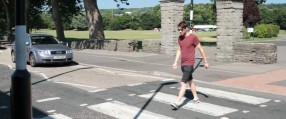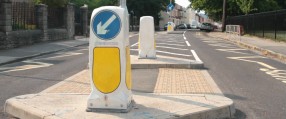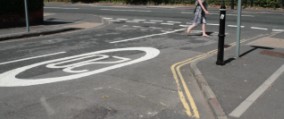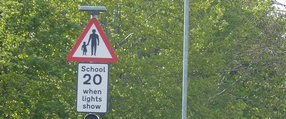Dropped kerbs
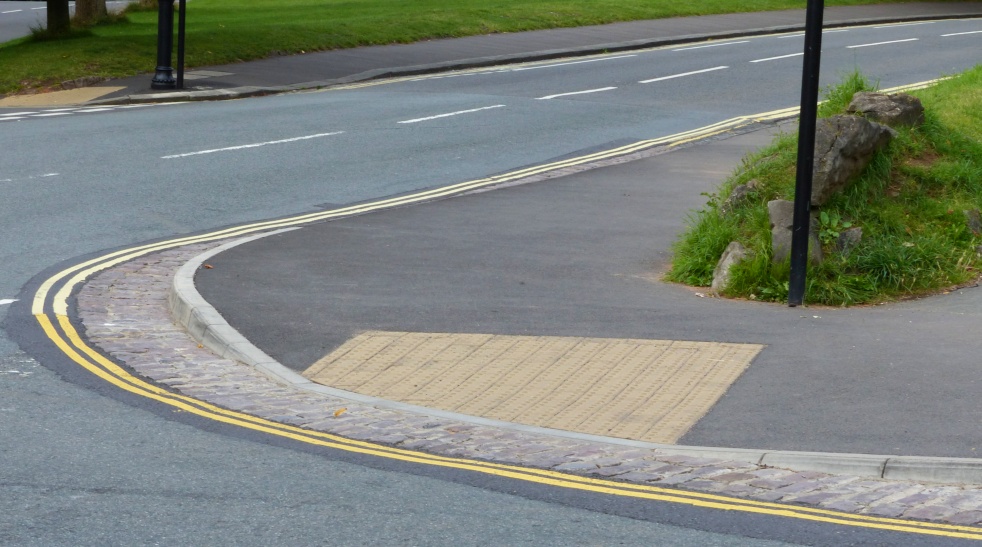
Dropped kerbs are where the pavement is gently sloped to the same level as the road. Modern dropped kerbs should always include tactile paving, which helps visually impaired people to identify a crossing point.
Where there are no dropped kerbs, people using wheelchairs or mobility scooters may find it impossible to cross the road, or cross a junction.
Dropped kerbs can also encourage pedestrians to cross the road at a safer location in comparison to other parts of the road.
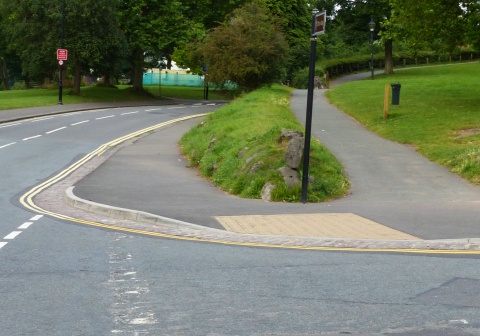
Disadvantages
- Can sometimes cause a drainage issue, depending on the location
- Some motorists may obstruct dropped kerbs, despite the fact it is an offence to do so
- For the pedestrian to cross safely, they must have good judgement of motor vehicle speeds and gaps in vehicle traffic
- Some motorists may obstruct dropped kerbs, despite it being an offence to do so
White bar marking
Dropped kerbs can be highlighted with a white road marking. This can help to ensure they are kept free of parked vehicles.
Advantages
- Allows wheelchair and mobility scooter users to cross the road, including side street junctions. Dropped kerbs are best installed as part of a ‘route’ for these users
- The tactile paving helps visually impaired and blind people to identify a suitable crossing point
- They can guide pedestrians to one of the safer parts of the road to cross
- It is an offence to obstruct (or park on) a pedestrian dropped kerb, and a penalty charge can be issued to the vehicle owner.
- Reduces the chances of pedestrians tripping over the kerb
- Relatively low cost
- The colour and presence of the tactile paving alerts vehicle drivers to the existence of the crossing point
Effectiveness
This intervention doesn’t have any safety evidence available. Instead, likely outcomes are covered.
Dropped kerbs make it easier for pedestrians to use local roads, especially those with a disability. Wheelchair or mobility scooter users, may not be able to move around the local area unless dropped kerbs are present.
Helping disabled people move around the local area with dropped kerbs allows them to stay active, and maintains their access to local facilities. For other pedestrians, dropped kerbs make it easier to walk around the local area – this keeps walking as a healthier, cheaper and environmentally friendly alternative to using a car.
Restrictions
- Dropped kerbs alone are not suitable to help pedestrians cross relatively busy roads - a formal crossing, such as a zebra crossing or pedestrian refuge island will be more suitable
- In some areas, the angle of the road and the pavement will make it difficult to install a dropped kerb
